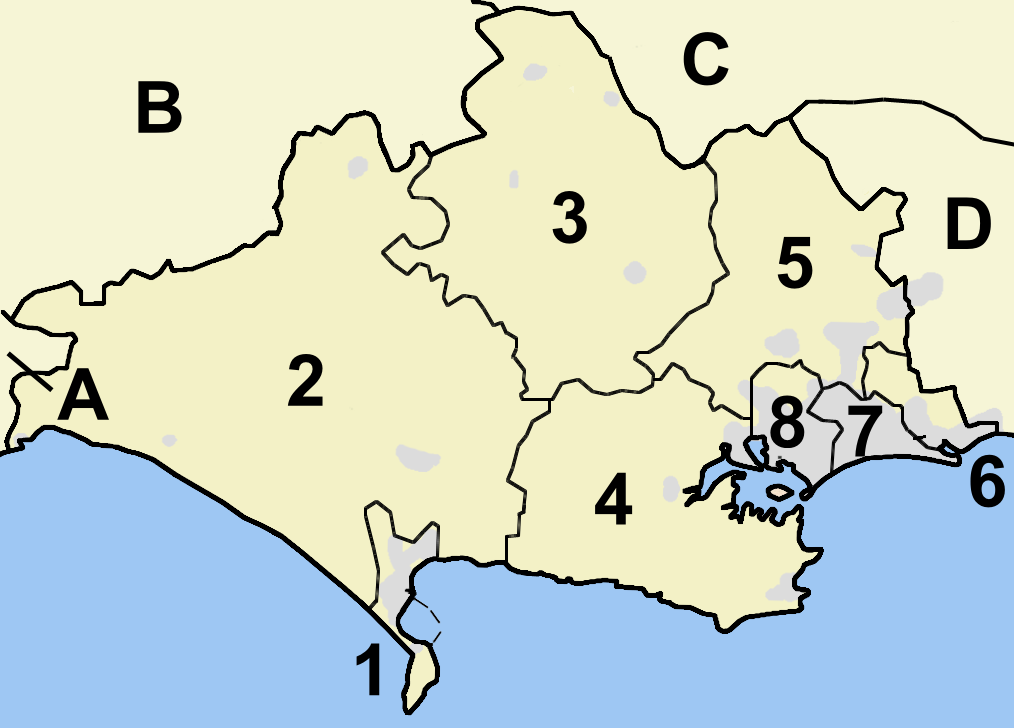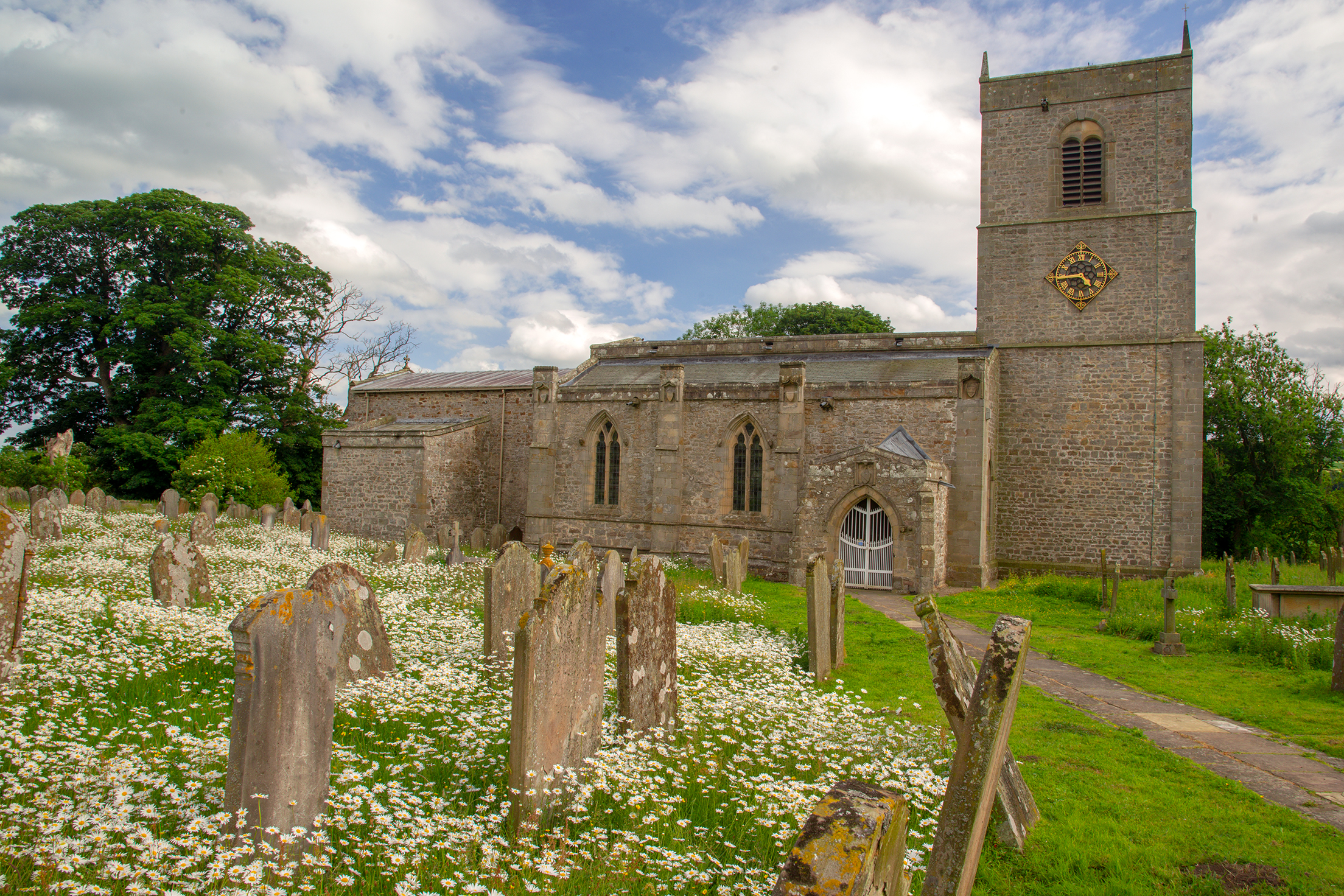|
Nether Cerne
Nether Cerne is a hamlet and civil parish in the English county of Dorset. It lies within the Dorset unitary authority administrative area, about north of the county town Dorchester and south of Sherborne. The A352 road which connects those towns lies about to the west. Dorset County Council's latest (2013) estimate of the parish population is 20. Etymology For Cerne, see River Cerne: Etymology. Description Nether Cerne is sited by the small River Cerne which rises near Minterne Magna to the north and runs in a narrow valley which is aligned roughly north-south. The Cerne Valley is one of several roughly parallel valleys which drain the dip slope of the Dorset Downs. The settlement of Nether Cerne comprises a church and adjacent late 17th-century house, plus a few cottages. In 1906 Sir Frederick Treves described the house and church as ''"ancient old cronies, still hobnobbing together"''. All Saints Church was originally built from rubble and flint in the second half of ... [...More Info...] [...Related Items...] OR: [Wikipedia] [Google] [Baidu] |
Dorset County Council
Dorset County Council was the county council of Dorset in England. It was created in 1889 and abolished in 2019. Throughout its existence, the council was based in Dorchester. Bournemouth and Poole were made independent from the county council in 1997 when their councils became unitary authorities. On the abolition of the county council in 2019, the borough of Christchurch was merged with Bournemouth and Poole to become Bournemouth, Christchurch and Poole, and the rest of the county was placed under a new unitary authority called Dorset Council. History Elected county councils were created in 1889 under the Local Government Act 1888, taking over many administrative functions that had previously been performed by unelected magistrates at the quarter sessions. The borough of Poole had been a county corporate since 1568, independent from the Sheriff of Dorset, but it was not considered large enough to take on county-level functions under the 1888 Act. Poole was therefore includ ... [...More Info...] [...Related Items...] OR: [Wikipedia] [Google] [Baidu] |
Etymology
Etymology ( ) is the study of the origin and evolution of words—including their constituent units of sound and meaning—across time. In the 21st century a subfield within linguistics, etymology has become a more rigorously scientific study. Most directly tied to historical linguistics, philology, and semiotics, it additionally draws upon comparative semantics, morphology, pragmatics, and phonetics in order to attempt a comprehensive and chronological catalogue of all meanings and changes that a word (and its related parts) carries throughout its history. The origin of any particular word is also known as its ''etymology''. For languages with a long written history, etymologists make use of texts, particularly texts about the language itself, to gather knowledge about how words were used during earlier periods, how they developed in meaning and form, or when and how they entered the language. Etymologists also apply the methods of comparative linguistics to reconstruct inform ... [...More Info...] [...Related Items...] OR: [Wikipedia] [Google] [Baidu] |
Churches Conservation Trust
The Churches Conservation Trust is a registered charity whose purpose is to protect historic churches at risk in England. The charity cares for over 350 churches of architectural, cultural and historic significance, which have been transferred into its care by the Church of England. The Trust works to prevent any deterioration in the condition of the buildings in its care and to ensure they are in use as community assets. Local communities are encouraged to use them for activities and events and the buildings provide an educational resource, allowing children and young people to study history, architecture and other subjects. Most of the churches saved from closure are Grade I or Grade II* listed. Many are open to visitors as heritage sites on a daily basis and nearly 2 million people visit the Trust's churches each year. The majority of the churches remain consecrated, though they are not used for regular worship. History The trust was established by the Pastoral Measur ... [...More Info...] [...Related Items...] OR: [Wikipedia] [Google] [Baidu] |
All Saints Church, Nether Cerne
All Saints Church in Nether Cerne, Dorset, England was built in the late 13th century. It is recorded in the National Heritage List for England as a designated Grade I listed building, and is a redundant church in the care of the Churches Conservation Trust. It was declared redundant on 1 December 1971, and was vested in the Trust on 8 March 1973. The church and adjacent manor house are built of bands of flint and stone. Most of the church dates from the 13th century, although the tower, with its pinnacles and gargoyle, and porch were added in the 15th. The interior of the church includes a melon-shaped 12th century font, believed to date from an earlier church on the same site. See also * List of churches preserved by the Churches Conservation Trust in South West England The Churches Conservation Trust, which was initially known as the Redundant Churches Fund, is a Charitable organization, charity whose purpose is to protect certain historic churches at ris ... [...More Info...] [...Related Items...] OR: [Wikipedia] [Google] [Baidu] |
Sir Frederick Treves, 1st Baronet
Sir Frederick Treves, 1st Baronet, (15 February 1853 – 7 December 1923) was a prominent British surgeon, and an expert in anatomy. Treves was renowned for his surgical treatment of appendicitis, and is credited with saving the life of King Edward VII in 1902. He is also widely known for his friendship with Joseph Merrick, dubbed the "Elephant Man" for his severe deformities. Life and career Frederick Treves was born on 15 February 1853 in Dorchester, Dorset, the son of William Treves, an upholsterer, of a family of Dorset yeomen. and his wife, Jane (''née'' Knight). As a small boy, he attended the school run by the Dorset dialect poet William Barnes, and later the Merchant Taylors' School and London Hospital Medical College. He passed the membership examinations for the Royal College of Surgeons of England in 1875, and in 1878 those for the fellowship of the Royal College of Surgeons (FRCS). He was a Knight of Grace of the Order of St John. Eminent surgeon Treve ... [...More Info...] [...Related Items...] OR: [Wikipedia] [Google] [Baidu] |
Dorset Downs
The Dorset Downs are an area of chalk downland in the centre of the county Dorset in south west England. The downs are the most western part of a larger chalk formation which also includes (from west to east) Cranborne Chase, Salisbury Plain, Hampshire Downs, Chiltern Hills, North Downs and South Downs.''Uplift, Erosion and Stability: Perspectives on Long-term Landscape Development'' ed. by Smith, Bernard J., Whalley Wilfred B. and Warke Patricia A. (1999), Geological Society Special Publication No. 162, Bath. Accessed on 3 Apr 2013. Physical geography The Dorset Downs are bounded on the north, along the steep scarp face, by the[...More Info...] [...Related Items...] OR: [Wikipedia] [Google] [Baidu] |
Escarpment
An escarpment is a steep slope or long cliff that forms as a result of faulting or erosion and separates two relatively level areas having different elevations. Due to the similarity, the term '' scarp'' may mistakenly be incorrectly used interchangeably with ''escarpment.'' ''Escarpment'' referring to the margin between two landforms, and ''scarp'' referring to a cliff or a steep slope. In this usage an escarpment is a ridge which has a gentle slope on one side and a steep scarp on the other side. More loosely, the term ''scarp'' also describes a zone between a coastal lowland and a continental plateau which shows a marked, abrupt change in elevation caused by coastal erosion at the base of the plateau. Formation and description Scarps are generally formed by one of two processes: either by differential erosion of sedimentary rocks, or by movement of the Earth's crust at a geologic fault. The first process is the more common type: the escarpment is a transition from one seri ... [...More Info...] [...Related Items...] OR: [Wikipedia] [Google] [Baidu] |
Minterne Magna
Minterne Magna is a village and Civil parishes in England, civil parish in Dorset, England, situated midway between Dorchester, Dorset, Dorchester and Sherborne. In the United Kingdom Census 2011, 2011 census the parish had a population of 184. The village is sited near the source of the River Cerne among the chalk hills of the Dorset Downs. Some of the highest points in Dorset, including Telegraph Hill, Dorset, Telegraph Hill (267 m) and Dogbury Hill (248 m), are nearby. The church contains the tombs of several members of the Napier Baronets, Napier family, who were Lords of the Manor from c.1600 to 1765. Minterne House Minterne House is the ancestral home of the Baron Digby, Digby family and earlier the Churchill family. The estate was once owned by the Cerne Abbey, Abbey of Cerne, from around the year 987, and, after the dissolution of the monasteries around 1539, it later passed to Winchester College who, in 1642, leased it to John Churchill (lawyer), John Chur ... [...More Info...] [...Related Items...] OR: [Wikipedia] [Google] [Baidu] |
River Cerne
The River Cerne is a river in Dorset, England, which rises in the Chalk hills of the Dorset Downs at Minterne Magna, between High Stoy and Dogbury Hill, flows down a valley through Cerne Abbas and Charminster, and flows into the River Frome, Dorset, River Frome in Dorchester, Dorset, Dorchester. The Cerne Valley lies in the Dorset National Landscape. Etymology The name Cerne is derived from the Primitive Welsh *''carn'', "cairn, pile of stones," thus meaning "the stony stream." The pronunciation with soft 'c', instead of "chern" as would be expected (Old English *''ċēarn''), is suggested as being due to Anglo-Norman language, Anglo-Norman influence. Course The Cerne has been described as "a friendly river, for none of its delightful villages shun the stream".Dorset's little rivers — The Cerne< ... [...More Info...] [...Related Items...] OR: [Wikipedia] [Google] [Baidu] |


